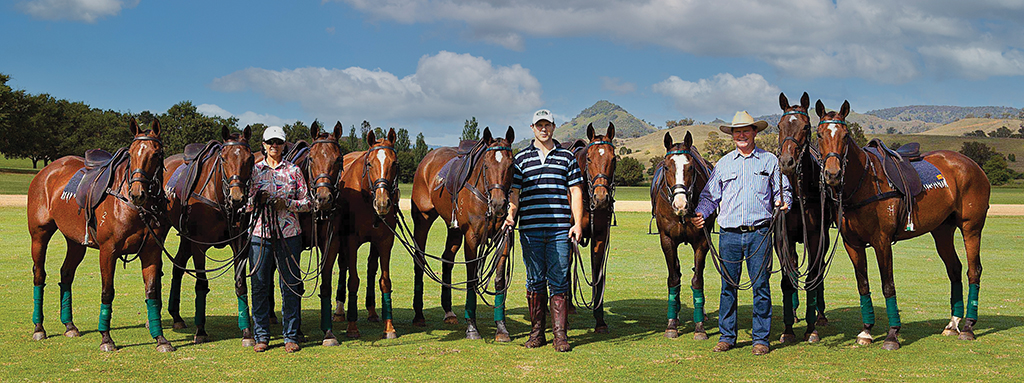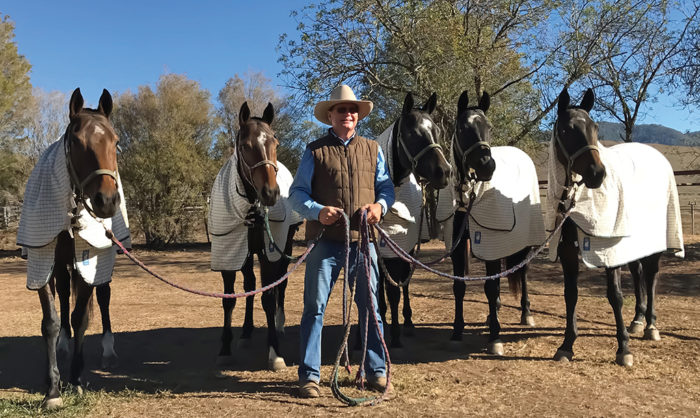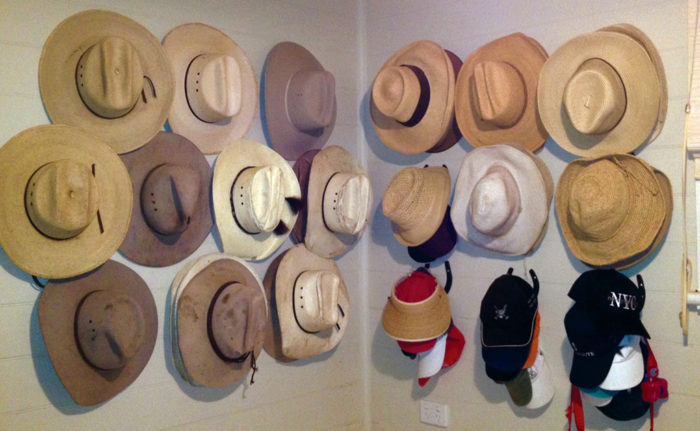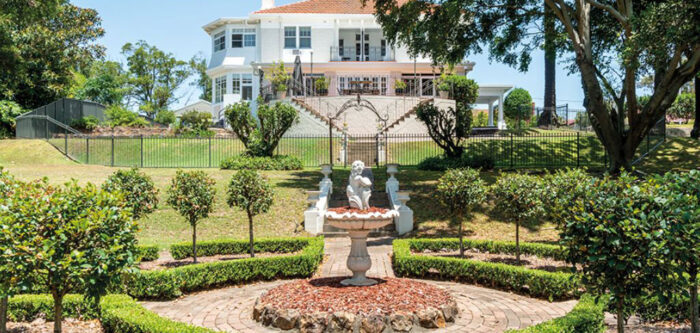
Of horses and men
The Haydon family’s history at Bloomfield Homestead in the Upper Hunter stretches back to the 1830s – and in this family men and their horses have always been inseparable.
Ronald Reagan loved to use this phrase, initially popularised by Winston Churchill: “There is nothing better for the inside of a man than the outside of a horse.” It’s a sentiment that Peter Haydon, a 5th generation member of the Haydon family might wholeheartedly agree with. The Haydon family can trace their roots all the way back to the times of Oliver Cromwell and his Ironsides in 17th century England.
“Haydon is a little town in Southern England,” says Peter. “My ancestors went to Ireland with Oliver Cromwell, then in 1828, Peter Haydon came to Australia. He lived with his wife Elizabeth at Tivoli, Rose Bay, in Sydney, running cattle and horses on the harbour foreshores.
It must have been a reasonably comfortable life on the waterfront with the amenities of a burgeoning colony, yet Peter had his sights set on a land grant near Scone in the Upper Hunter. He invited his siblings, Thomas and Matilda, to join them Down Under to help him run his rural enterprise at Blandford which he had called Bloomfield, after properties the family held in England and Ireland.
With Peter running a cattle-grazing business, Thomas was more of a horse man, purchasing Young Dover, a well-bred stallion who became the ancestor of a long list of Bloomfield’s most successful mares and stallions.
“It goes all the way back to Thomas and Young Dover winning the Maitland Cup in 1843,” Peter explains. “We play polo, so we breed Australian stock horses that are good to work on our property and they are good sporting horses too.”
For a stud that bred and trained Haydon Angel Jewel, one of the most decorated polo ponies in the history of the sport, that is quite an understatement… but more on that later.
Heritage and horses
Seven generations of Haydons have been living at Bloomfield Homestead, originally built by Thomas Haydon almost two centuries ago. Every generation had a special connection to an outstanding stallion or mare. It was Thomas Haydon’s five sons Peter, Stuart, Bernard, Thomas and William who combined the family’s horse breeding and cattle interests, undertaking challenging droving journeys to the family’s grazing properties in the Gulf of Carpentaria, coming back with cattle to be fattened at Bloomfield and then onto Homebush to be sold, a combined trip of over 2,600 kms, to feed the growing population of Sydney and surrounding areas.


Peter Haydon and his winning horses at the 2018 Scone Polo Cup. 
Home is … where you hang your hat. 
Peter and Alison respectfully renovated the original homestead and turned it into a comfortable family home.
Walers, the famously robust, hardy horses well adapted to the harsh conditions in New South Wales were bred and shipped as army remounts by the hundreds. Bernard was famous for his successes with undefeated stallion Haydon Tester, competing in Bridle Spurts, so named after the bridle that the winner would receive.
Horses Polo, Fred and the famous Midnight, all by Haydon Tester, went into the epic cavalry charge at Beersheeba in w 1917 – ridden by Bernard’s sons Barney and Guy, and their neighbour Max Wright. With Midnight killed at Beersheba, Polo and Fred survived the entire Middle East campaign, yet Barney and Max had to take their beloved equine companions for a “last ride” into the desert as they were told by army command that horses could not be returned home.
Polo pitches to battlefields
Bernard’s third son, Fred, by all accounts an exceptionally fine horseman, continued running Bloomfield, breeding station sires used all over Australia. He was integral to establishing the original Australian Bushman’s carnivals and played in the Bloomfield Polo Team.
It was a tradition continued by Jim Haydon, one of Fred’s two sons, who campdrafted in the NSW Team at the Sydney Royal Agricultural Show in the 1930s, won Champion Polo Pony at Sydney RAS in 1967 and won the Australian Cutting Horse Championships in 1969. However, his was another generation of Haydons deeply affected by war. During ferocious fighting in the Middle East and later at Sanananda, New Guinea, near the infamous Kokoda Track, Jim drew detailed maps of the natural landmarks and the positions of various regiments just as Guy had done in the Sinai desert.
These maps, along with a treasure trove of letters and photos are kept at the Haydon Family Archives at Bloomfield.
“He once spent seven days and seven nights under ceaseless enemy fire,” Peter recalls. “When they finally dug their way back out and he pulled his gear off, his skin came off with it.”
Jim led his troops in to capture the Japanese stronghold of Lae in eastern New Guinea. He was later shot down at Balikpapan, Borneo, barely making it out of the plane wreck alive.
He was married during the war to Ethel Cay, who was stationed as a nurse at an army hospital at Koitaki, near the Kokoda Track’s Golden Staircase. “My mum is now 101 years old and still lives independently in Murrurundi and takes great interest in everything that is happening at Bloomfield,” Peter says.
Royal appointment
Peter carried on the family tradition at the Blandford property, but took a royal detour, when he was invited to manage the polo stables of the Prince of Wales at Windsor in 1989. When Peter, a self-confessed republican, first heard about the offer, he didn’t take the idea seriously.
“We had Bloomfield, and we had little kids and I just didn’t think it was possible. But when I told my wife Alison about it, she made me go back and find out more about it. And six months later we were all
in England.
“It really was a fairy tale existence,” remembers Peter. “We’d go inside Windsor Castle and at times our boys would play foot polo with William and Harry. We’d ride past the Queen and give her a wave and off we’d go.
“Not to say there weren’t the occasional interesting discussions with the Queen on the finer details of what qualities are needed to breed champion horses for different kinds of races and sports like polo. She really loved her horses, was a keen breeder and gave them all their names.
“We saw a happy side of Prince Charles,” continues Peter. “He was doing a lot of amazing stuff behind the scenes and often used polo tournaments to raise money for the Prince’s Trust. Playing polo was his way of taking a break, of unwinding. He loved that, on the field, he would be treated like any other player.”
Read more about the Haydon Stud in our Autumn issue of Hunter & Coastal Lifestyle Magazine or subscribe here.
Story by Cornelia Schulze, photography courtesy of the Haydon family.

